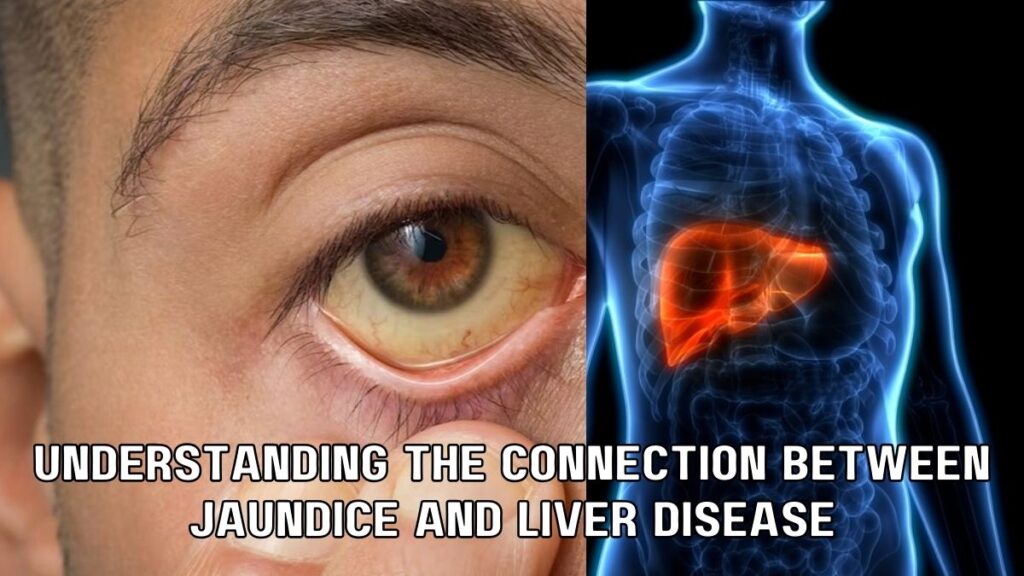Introduction
Jaundice is a common medical condition that many people have heard of, but few truly understand. It’s often associated with a yellowing of the skin and eyes, but what causes it, and why is it linked to liver disease? In this blog, we’ll delve into the intricate connection between jaundice and liver disease, exploring the causes, symptoms, and treatment options.
What is Jaundice?
Jaundice, also known as icterus, is a medical condition characterized by the yellowing of the skin, eyes, and mucous membranes. This discoloration occurs due to an excess of bilirubin in the bloodstream. Bilirubin is a yellow pigment formed during the breakdown of red blood cells. Normally, the liver processes bilirubin and excretes it in bile, which is then eliminated from the body.

The Role of the Liver
The liver is a vital organ with numerous functions in the body, including:
- Metabolizing nutrients and drugs.
- Producing proteins necessary for blood clotting.
- Filtering toxins and waste products from the blood.
- Storing glycogen, a source of energy.
- Synthesizing bile for digestion.

The Connection Between Jaundice and Liver Disease
Jaundice is often a symptom of an underlying liver problem. When the liver is unable to process bilirubin effectively, it accumulates in the bloodstream, leading to the yellowing of the skin and eyes. Several liver diseases and conditions can disrupt the liver’s normal functions, causing jaundice. Some common liver-related causes of jaundice include:
- Hepatitis: Viral infections like hepatitis A, B, and C can inflame the liver and impair its function, leading to jaundice.
- Cirrhosis: Chronic liver diseases, such as alcoholic liver disease and non-alcoholic fatty liver disease, can progress to cirrhosis, where healthy liver tissue is replaced by scar tissue. This scarring disrupts the liver’s ability to process bilirubin, causing jaundice.
- Gilbert’s Syndrome: This is a benign genetic condition that affects the liver’s ability to process bilirubin, leading to mild and intermittent jaundice.
- Bile Duct Obstruction: Conditions like gallstones or pancreatic cancer can block the bile ducts, preventing the flow of bile from the liver to the small intestine. This backup of bile can result in jaundice.
Symptoms of Jaundice
Aside from the characteristic yellowing of the skin and eyes, individuals with jaundice may experience other symptoms, depending on the underlying cause. These can include:
- Dark urine
- Pale-colored stools
- Fatigue
- Abdominal pain
- Nausea and vomiting
- Itchy skin
Treatment Options
The treatment for jaundice depends on its underlying cause. When jaundice is a symptom of liver disease, addressing the root issue is crucial. Treatment options may include:
- Managing Underlying Liver Disease: For liver conditions like hepatitis or cirrhosis, medical interventions may be necessary to slow disease progression and improve liver function.
- Bile Duct Clearance: If bile duct obstruction is the cause, procedures like endoscopic retrograde cholangiopancreatography (ERCP) or surgery may be needed to clear the blockage.
- Symptomatic Relief: In cases of benign jaundice, such as Gilbert’s syndrome, treatment may focus on managing symptoms and alleviating discomfort.
Prevention and Conclusion
Preventing jaundice often involves maintaining good liver health. This can be achieved by:
- Avoiding excessive alcohol consumption
- Getting vaccinated against hepatitis
- Maintaining a healthy weight and diet
- Regular exercise
- Regular check-ups with a healthcare provider
In conclusion, jaundice is a visible sign of an underlying liver issue. Understanding its connection to liver disease is essential for early detection and appropriate treatment. If you or someone you know experiences jaundice or related symptoms, it’s crucial to seek medical advice promptly to identify and address the underlying cause. Maintaining liver health through a healthy lifestyle and regular check-ups is also key to preventing liver-related issues that can lead to jaundice.

